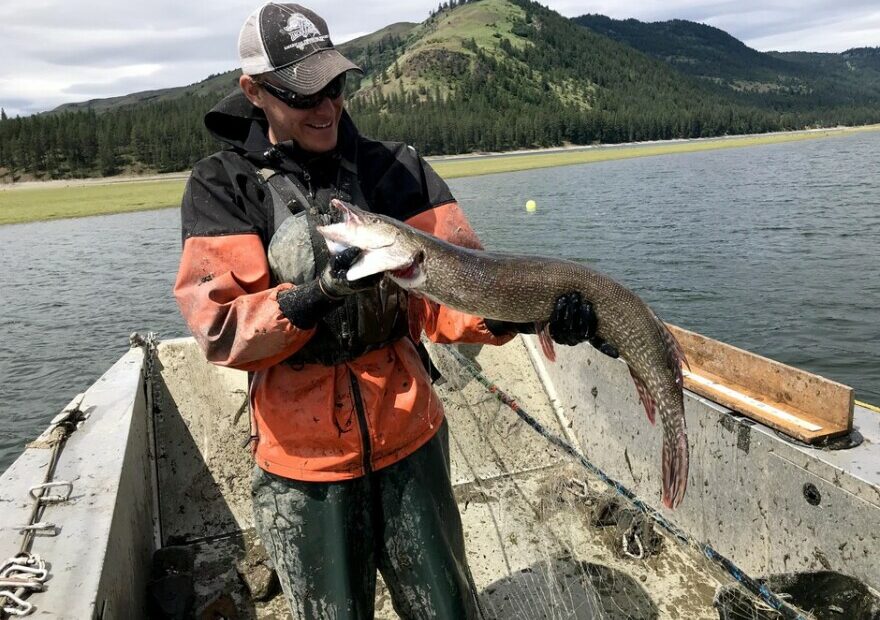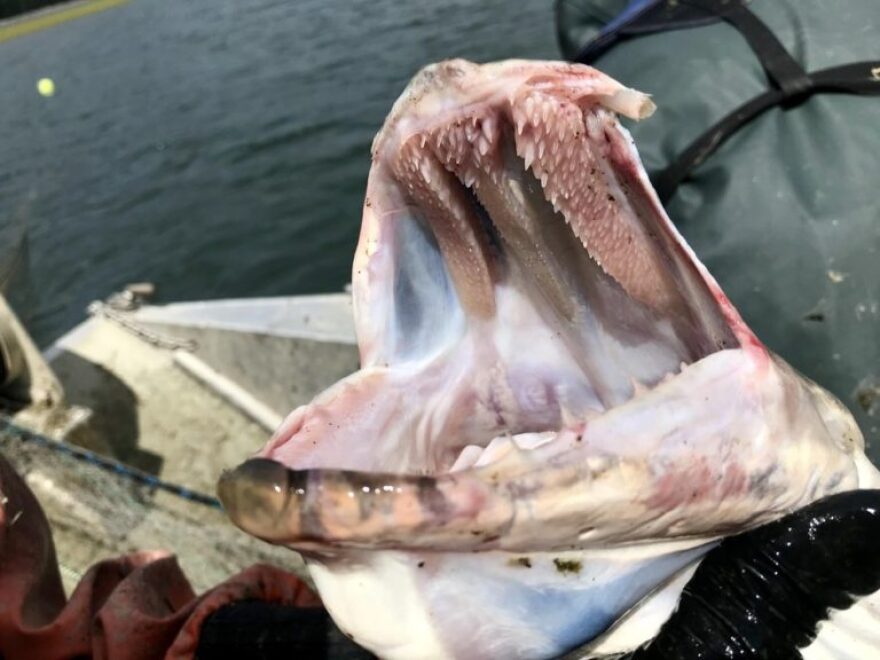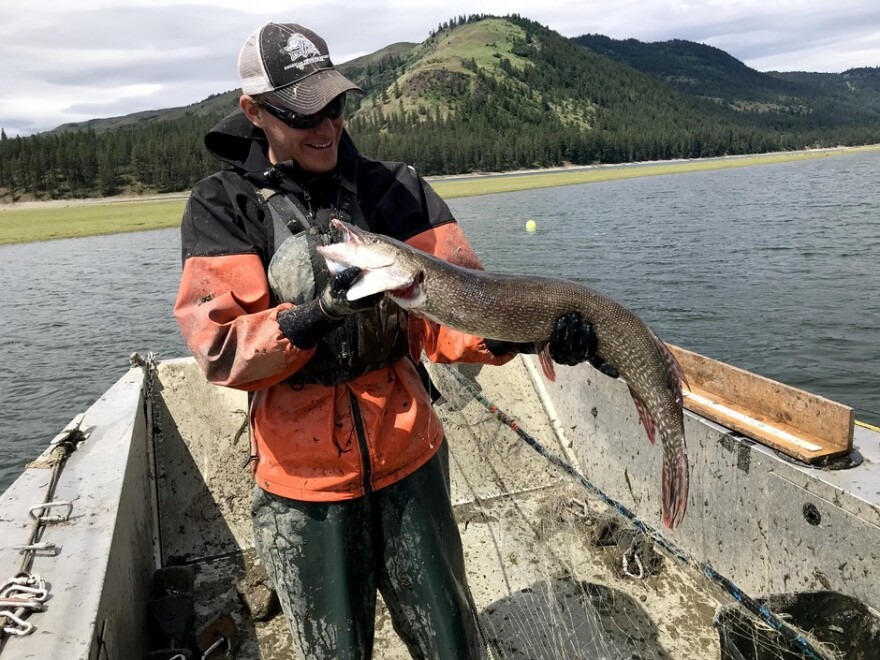
Biologists prepare for possible northern pike invasion beyond Grand Coulee Dam
Listen
(Runtime 0:54)
Read
Right now, an invasive fish species is trapped behind Grand Coulee Dam. If northern pike make it past the two giant cement dams in their way it could spell trouble for salmon. That’s why wildlife agencies are preparing for the worst-case scenario.
For now, northern pike are trapped behind Grand Coulee Dam. While there have been fewer detections this year, Washington Department of Fish and Wildlife biologist Jesse Schultz says the persevering pike are getting closer to Grand Coulee.
“We’re trying to hold the line,” Schultz said at a Northwest Power and Conservation Council Fish and Wildlife Committee meeting.

Northern pike are voracious. Because their mouths open so wide, they can eat a lot of fish other predators can’t. (Credit: Courtney Flatt / Northwest News Network)
Northern pike have massive, toothy jaws and even bigger appetites. The invasive fish have been known to even chomp down on bats and ducks. So, it’s no wonder biologists are worried about salmon – and the billions of dollars that have been poured into their recovery.
Biologists say early detection of northern pike is key, which is why the Washington Department of Fish and Wildlife hired an environmental consulting agency to develop a rapid response plan if fish are found in other waters.
“What if it doesn’t go well? What if bad things happen, and they get out? What’s the response of the agencies in the area? How do we deal with that,” said Patty O’Toole, the council’s Fish and Wildlife Division director.
Those questions are why wildlife officials wanted to get a plan in place, she said.
The plan should help minimize the risk of northern pike spreading to other areas, said Erika Rubenson, with Four Peaks Environmental & Data Science. That is the agency that came up with the action plan. It will also increase the possibility of early detection and develop long-term management strategies, she said.
This response plan could work for other invasive aquatic species that Schultz said have outdated response plans, like zebra and quagga mussels.
In the plan, several steps will verify whether northern pike are present. Next, agencies will sample for the pesky predatory fish or environmental-DNA (eDNA.) If the invasion is bad enough, the state plans to set up an incident command system, like it does with wildfires.
The Grant County and Douglas County Public Utility districts also are monitoring for northern pike eDNA, in addition to an extensive statewide eDNA monitoring system with the Washington Department of Fish and Wildlife.
Northern pike, which are different from northern pikeminnow, slowly made their way into Washington from Montana. In the 1950s, anglers illegally brought the fish to Montana by the bucketful to stock western lakes. While they’re a common staple on many upper Midwestern plates, the aggressive fish ended up quite literally eating their way through waters where they’re not native.
Eventually, they made their way to Box Canyon Reservoir in northeastern Washington to Lake Roosevelt’s vast reservoir. Northern pike have also been found in Seattle’s Lake Washington. No northern pike have been reported in Oregon yet.
The Confederated Tribes of the Colville Indian Reservation, the Spokane Tribe of Indians and the Washington Department of Fish and Wildlife have kept northern pike at bay, through large-scale gillnetting and electrofishing and programs to pay for every fish caught.
To report northern pike, take a picture, geo-tag the location and submit the information to the Washington Department of Fish and Wildlife through an app or email AIS@dfw.wa.gov.
















